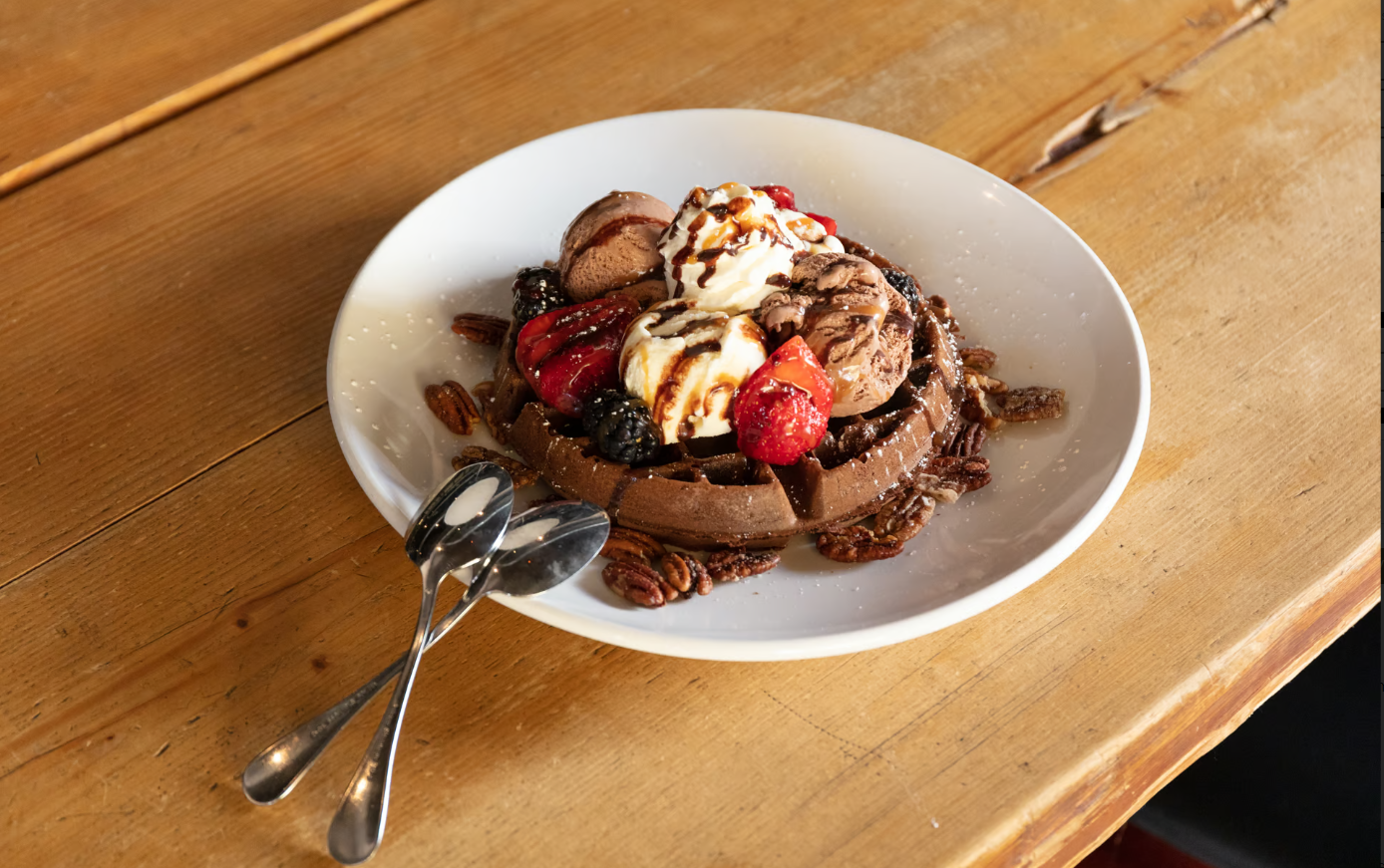
Marcel Proust had his madeleines, those delicate tea cakes that unleashed his childhood memories of rural France. I too have a magic carb, one that transports me back to my early days in Brooklyn: pizza.
Over a slice and a Diet Coke, my girlfriends and I would talk about clothes, school, boys, parents… pretty much everything, in fact, except the pizza itself. As far as we knew, there were only two varieties, both sold in the same casual storefronts with no more than three or four tables. We got the kind that came out of the oven on a big round metal plate, the kind you could fold and eat with your hands. The square pan variety that emerged from the same oven, called Sicilian, was more doughy and less portable though it also came by the slice.
Aside from the occasional grease-on-the-blouse incident that resulted from taking our food with us on walks down Flatbush Avenue, what was there to discuss?
As it turned out, plenty.
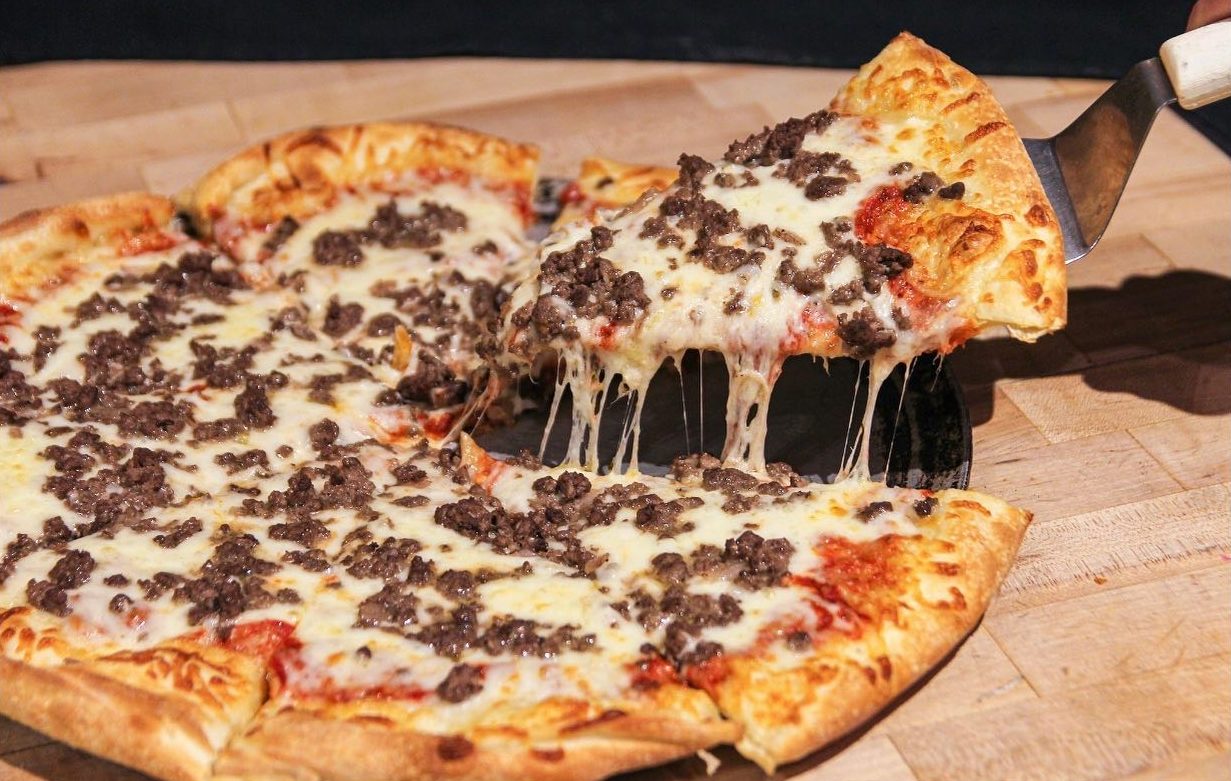
By the time I got a job editing food and travel guides in Manhattan, I knew that my Brooklyn friends and I had enjoyed a version of street food brought to America at the end of the 19th century by southern Italian immigrants. It was originally made in coal ovens, but now gas was the usual source of heat. I also became aware of the existence of other pizza styles, created in upstart culinary meccas like Chicago and California.
I began to understand too, that within the New York-style designation, everything from the precise crust thickness and sauce-to-cheese ratio to the red sauce recipe and topping options — even whether there should be toppings beyond cheese at all — was open to dispute.
When I moved to Tucson in the ’90s, I had my doubts about being able to continue my pizza research, but I was wrong. Very wrong. Not only did I find a great number of styles to choose from — more and more as years went by — but I discovered Tucsonans love to argue about which is the best, the most genuine, etc. almost as much as New Yorkers do.
The key differences in research methodology were that I had to drive to the field site rather than walk or take the subway, and that the subject was rarely available by the slice — at least early on.
The following chronology of my pizza journey in Tucson is by no means comprehensive or reflective of anything besides my personal taste and sampling experiences.
Some New Yorkers come to Tucson to become serious authors and find themselves writing articles about pizza.
Others come to attend the University of Arizona and find themselves opening up a pizzeria.
This was the case with Tony Vaccaro, a Long Island native who, while pursuing graduate studies, encountered New York pizza-deprived students burning the midnight oil at dorms. To meet their need, he turned to the recipes of his grandfather, who had a pizzeria in Canarsie, Brooklyn. In 1996, Vaccaro opened the Brooklyn Pizza Company on Fourth Avenue.
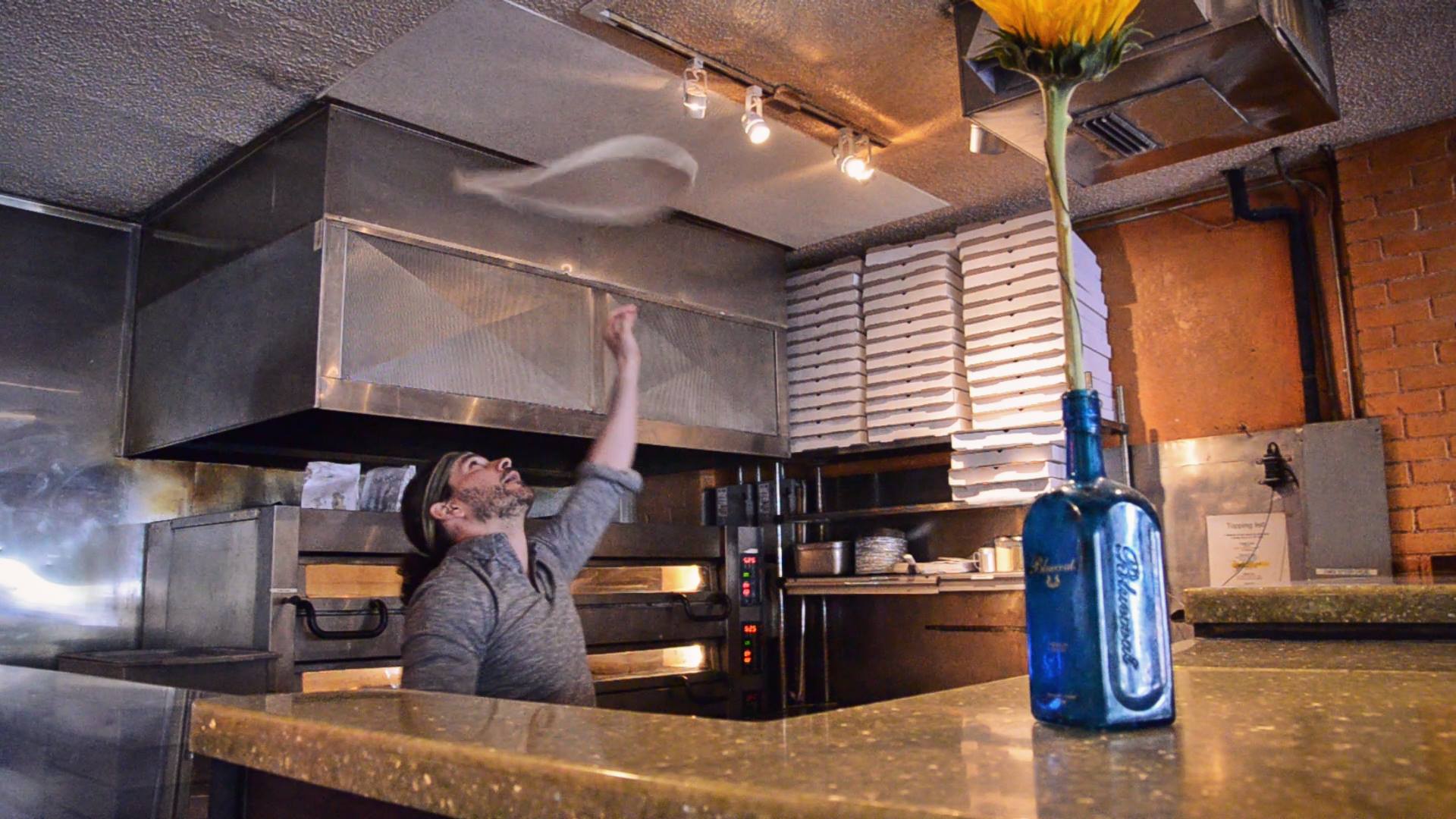
The size of the pies and the thickness of the hand-tossed dough were roughly as I remembered them from my early years, and the plain cheese version was excellent, though not quite as hot and gloppy as I recalled. And I found far more pie types than had been offered by typical New York pizzerias: tomato and basil, veggie, cheeseless veggie, and white (three cheeses and no red sauce). In addition, there were optional toppings that I would never have encountered back east, including jalapeños.
I soon came to understand that toppings are generally expected in the west. And Brooklyn Pizza offered many compensations.
Among the other reasons that I moved to Tucson were its sunny sunny days and starry starry nights. The adjacent Sky Bar featured regular astronomy programs, while solar panels made the bar and Brooklyn Pizza the first businesses in southern Arizona to offset 100% of their electricity demand.
I next expanded my pizza horizons with a visit to Rocco’s Little Chicago Pizzeria, which opened in midtown in 1998. Chicago-style pizza, claimed to be the first New World variation on the Italian import and introduced at Pizzeria Uno in 1943, features a flaky crust that rises an inch or more above the plate to embrace a heap of toppings.
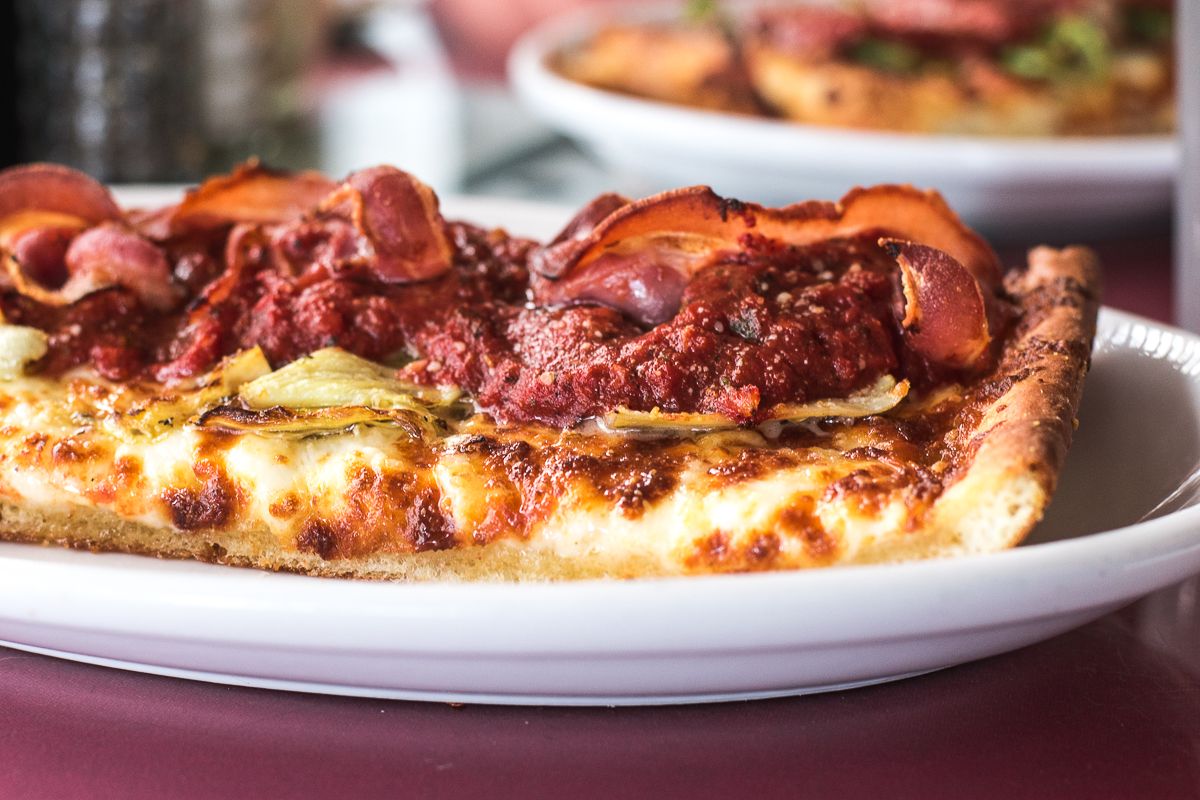
That said, the menu created by Chicago native Anthony “Rocco” DiGrazia makes it clear that his hometown pies are not all deep-dish or stuffed style (the latter adds another layer of dough to the deep dish version, and is not to be confused with the stuffed-crust version popularized by Domino’s). On the south side of Chicago, as well as in many other parts of the Midwest, thin crust pizzas with a limited number of toppings are more traditional. According to DiGrazia, the deep dish and stuffed versions tend to appeal to the customers who side their pies with chicken wings.
Not that there’s anything wrong with that.
Call it a restaurant or a “concept.” In 2003, Tucson native Sam Fox introduced fast-casual gourmet pizza to the city with Sauce Pizza & Wine.
New York-style pizza is often called thin crust to distinguish it from styles like Chicago and Sicilian, but the pies that emerged from Sauce’s brick ovens were slimmer than those I grew up with. And the topping combinations were unlike any I had encountered before: rosemary potato, feta, tapenade, and truffle oil, for example, and prosciutto, fig, goat cheese, and arugula.
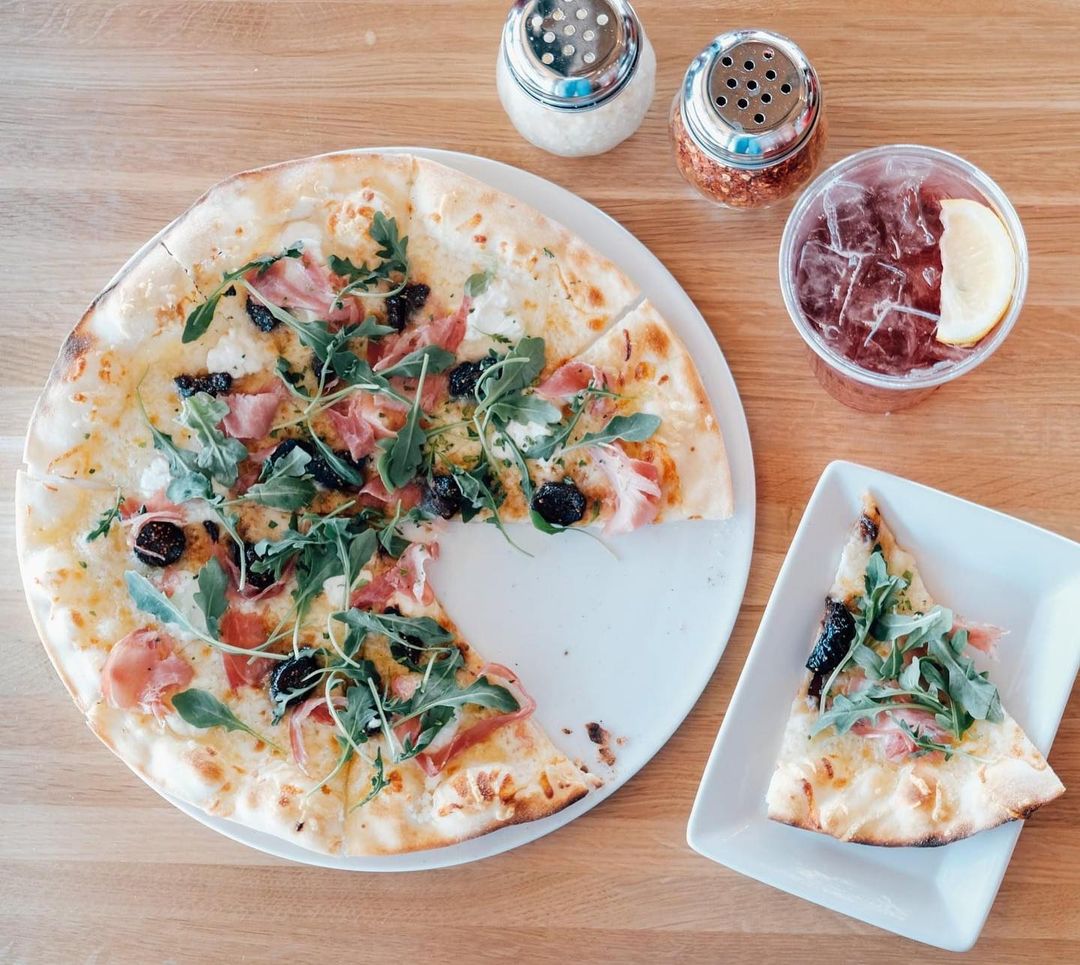
It occurred to me that this was a version of California pizza, often called “designer” pizza. Its origins — like those of all the other varieties I’ve mentioned — are disputed, but sightings date to the early 1980s at Chez Panisse in Berkeley and Spago in Los Angeles. The style was popularized by California Pizza Kitchen (CPK), a chain that originated in Beverly Hills in 1985.
The California Pizza Kitchen in Tucson, which opened at the Tucson Mall in 2010, closed in 2015. I have noticed that, aside from this brief interlude, no pizza in Tucson is ever called California style. Why? I don’t know, but it seems that Arizonans in general do not like to credit our neighbors to the west for much except raising real estate prices.
I digress.
Sauce was sold in 2015 and its branches have continued to proliferate around the country. I still enjoy the original (very) thin crust pizza, though other crust types are now available. It’s tasty and, if I have it with one of Sauce’s excellent salads, I can tell myself I’m eating diet food.
With its commitment to both individual health and environmental concerns, Renee’s (formerly Renee’s Organic Oven) crossed another pizza frontier. Opened in 2005, Renee’s was the first to serve gluten-free pies — made with cornmeal that’s not genetically modified — as well as to use all organic ingredients. This intimate restaurant was another early adopter of exotic topping combinations, in this case, exhibiting pizza multiculturalism. Among its adventurous pies are the Yucatan (black beans, cheddar, jalapeños, black olives, salsa fresca, and avocado) and the Thai Chicken, a tasty Bangkok-meets-Italy blend of red curry sauce, chicken, mozzarella, red peppers, zucchini, onions, basil, and parmesan. Vegan options are available for these and other pies.
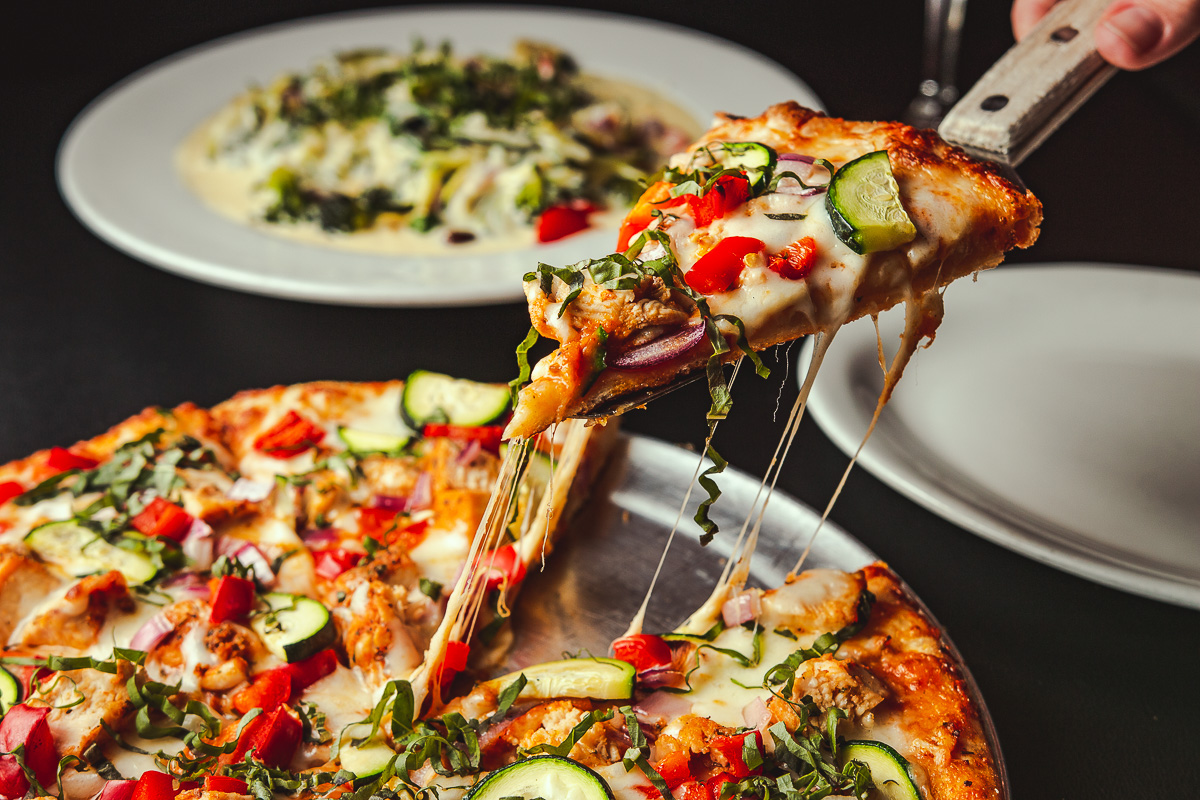
It should be noted that both Renee and her husband Steve Kreager have backgrounds working in traditional pizzerias in the Detroit area and in Tucson. They perfected their oven and dough game before experimenting with the genre.
Also in 2005, native Tucsonan siblings Josh and Aric Mussman took their pizza in a different direction at Vero Amore: back to its Italian roots. They were the first in Tucson — and one of fewer than 40 in the United States at the time — to have their pies certified by the Verace Pizza Napoletana (VPN), a Naples-based trade association devoted to establishing guidelines for authentic Neapolitan pizza.
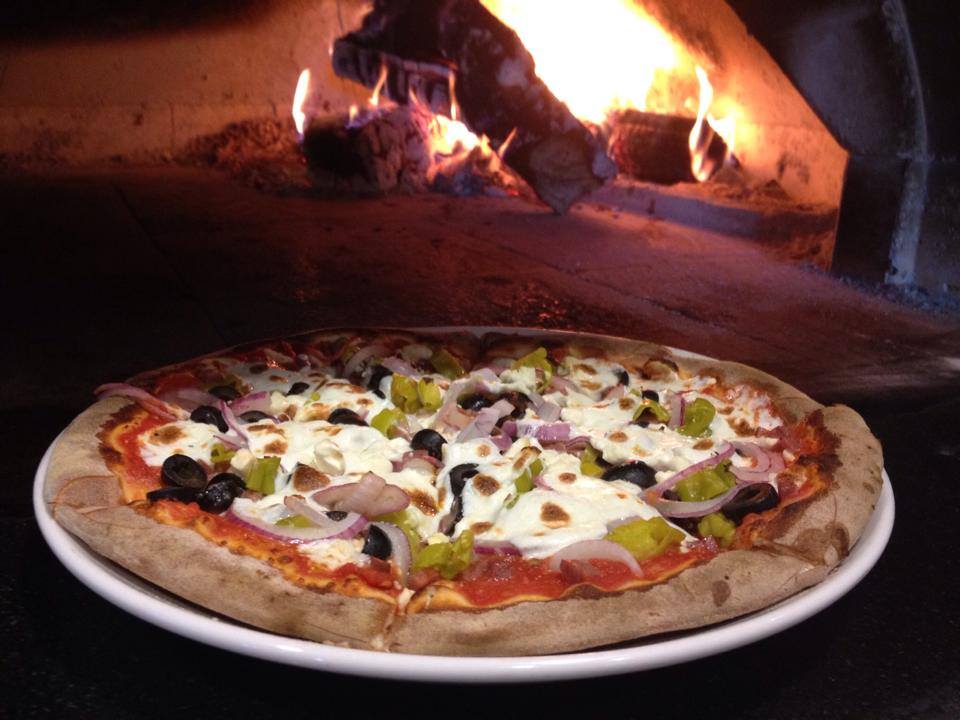
Among the requirements for a VPN status are the use of a wood-fired oven heated to 900 degrees Fahrenheit, a crust width of no thicker than half an inch, and the eschewing of all chemicals, including pesticides and preservatives, in the ingredients (many of which are imported from Italy).
But although exotic toppings are not especially popular in Italy, the VPN designation doesn’t restrict what you can put on a pie. So along with such Italian staples as the Margherita (basil, mozzarella, tomato sauce), you’ll also find the Anima, which incorporates pesto cream, chicken, and gorgonzola.
In the last decade and a half, pizza has been raised to an art form in Tucson. It’s become the medium through which some of the best chefs in town express their creativity, drawing an audience for ingredients and preparations that might have been considered too esoteric or adventurous in other contexts.
Particularly popular among artisan pizza makers is the Neapolitan style, not necessarily with a VPN designation, but made in a wood-fired oven and often in 11 or 12-inch size as the default. Toppings usually include a nod to the classic Margherita but most are wildly inventive. A surprising number include figs.
You’ll find riffs on Neapolitan pizza in all parts of town. My five top picks in this category, in the order in which they established brick-and-mortar stores, are as follows.
Opened in 2012, Reilly Craft Pizza + Drink was a key player in the revival of downtown. Chef/owner Tyler Fenton’s stylish restoration of a 1906 former funeral home wowed those venturing back to the old heart of the city. So did his creative menu. It’s hard to choose a favorite pie, but as a fan of both pizza for breakfast and breakfast for dinner, I’m particularly fond of the speck and egg, which manages the delicate balancing act of keeping the yolk from being too runny or completely dried out.
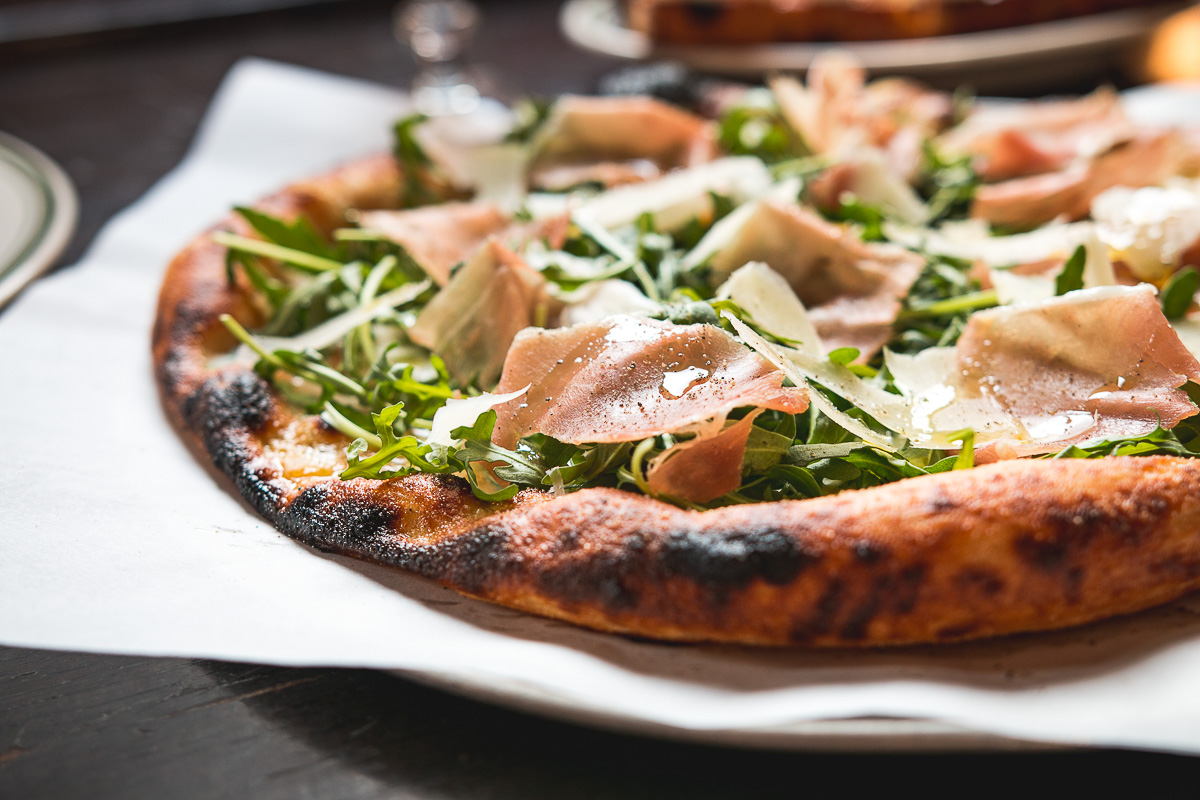
Restaurateur Ari Shapiro is justly proud of the genealogy of his pies at Falora, which debuted in midtown’s Broadway Village in 2013. The pizzas, we learn from the menu, are “baked in a brick oven hand-built by Stefano Ferrara, a third-generation builder in Naples. We slow-ferment our dough; 00 flour, milled in Naples since 1924.” I was glad to be educated about double zero flour — in the Italian classification system, the finest ground — and even gladder to sample the Arrosto, topped with feta, eggplant, potatoes, and dates.
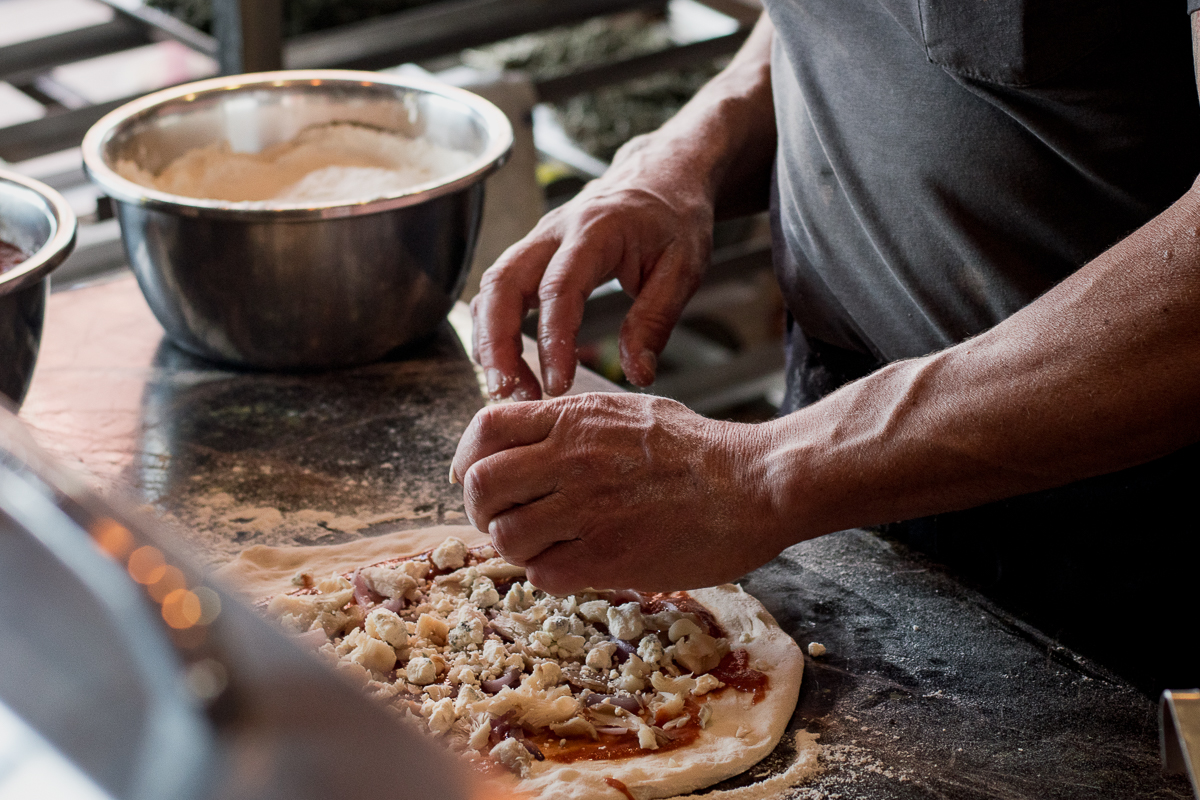
There are many things to admire about Fiamme Pizza, which opened in Sunrise Village in the Foothills in 2017. Three stand out for me: that some pizza is available by the slice (called Neo-Brooklyn, it’s Neapolitan-style but made in a divisible 18-inch New York size), that there exists here a dessert pizza drizzled with Nutella and topped with fresh strawberries and blueberries, and that owner Scott Volpe is a pizza acrobat, who competes regularly — and successfully — in Las Vegas’s World Pizza Games and contests in Italy.
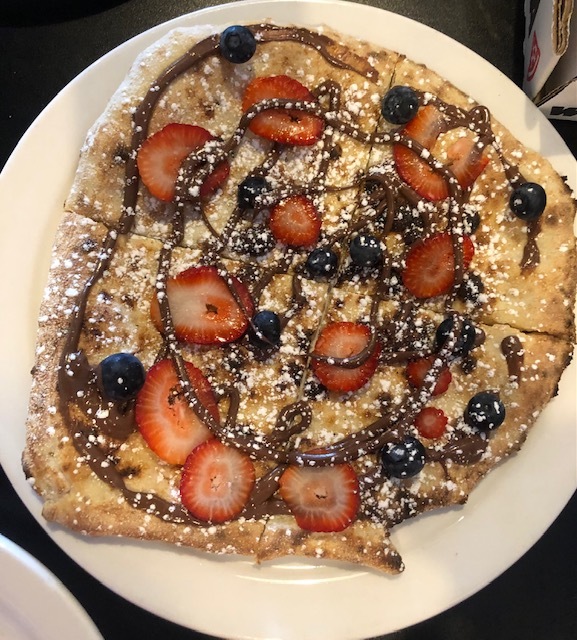
Pizzeria Bianco had only a brief stint in Tucson, but its spirit and craft live on at Anello, which opened in 2017 near Fourth Avenue. Chef/owner Scott Girod, who worked at several of Chris Bianco’s restaurants in the Phoenix area before following the James Beard award-winner to Tucson, also spent some time in Japan — perhaps the inspiration for the restaurant’s pared-down style and menu, which offers only four pizza bases and two topping options. Only the Verde veers far from the classics, featuring smoked mozzarella, parsley salsa verde, and pistachios.
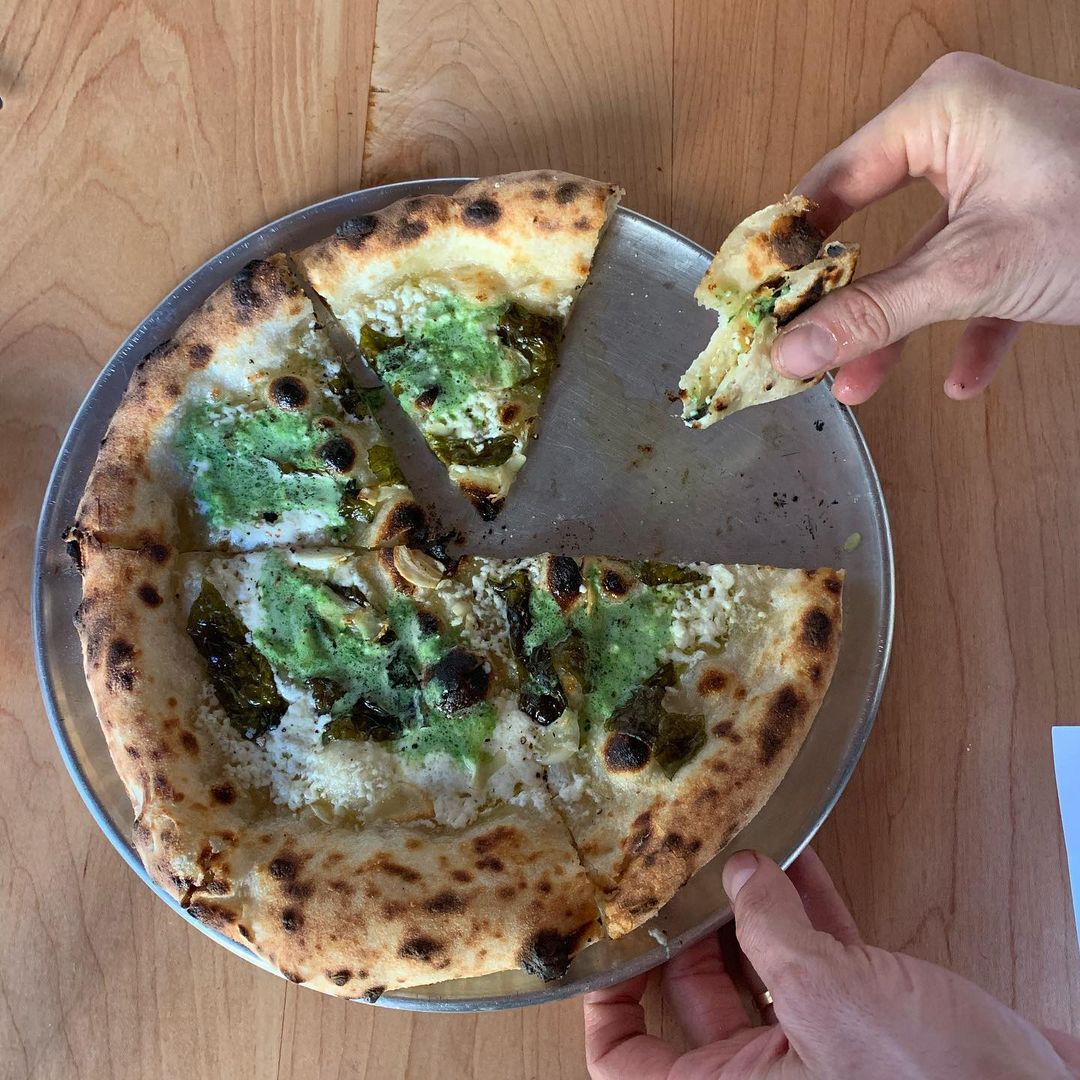
Zio Peppe began showcasing the combined talents of Mat Cable and Devon Sanner on the east side in 2021. Cable, whose Fresco Pizzeria produces more traditional pies, and Sanner, who worked for many years with chef Janos Wilder, joined forces to concoct a small but wildly imaginative selection of pies. These days, culinary mashups are not uncommon, but Zio Peppe kicks cultural collaboration up a notch by importing the specialty of another chef, Juan Almanza. The result, the El Rustico Birria Pizza, is a dream come true for anyone craving both pizza and Mexican food but who can’t decide between them.
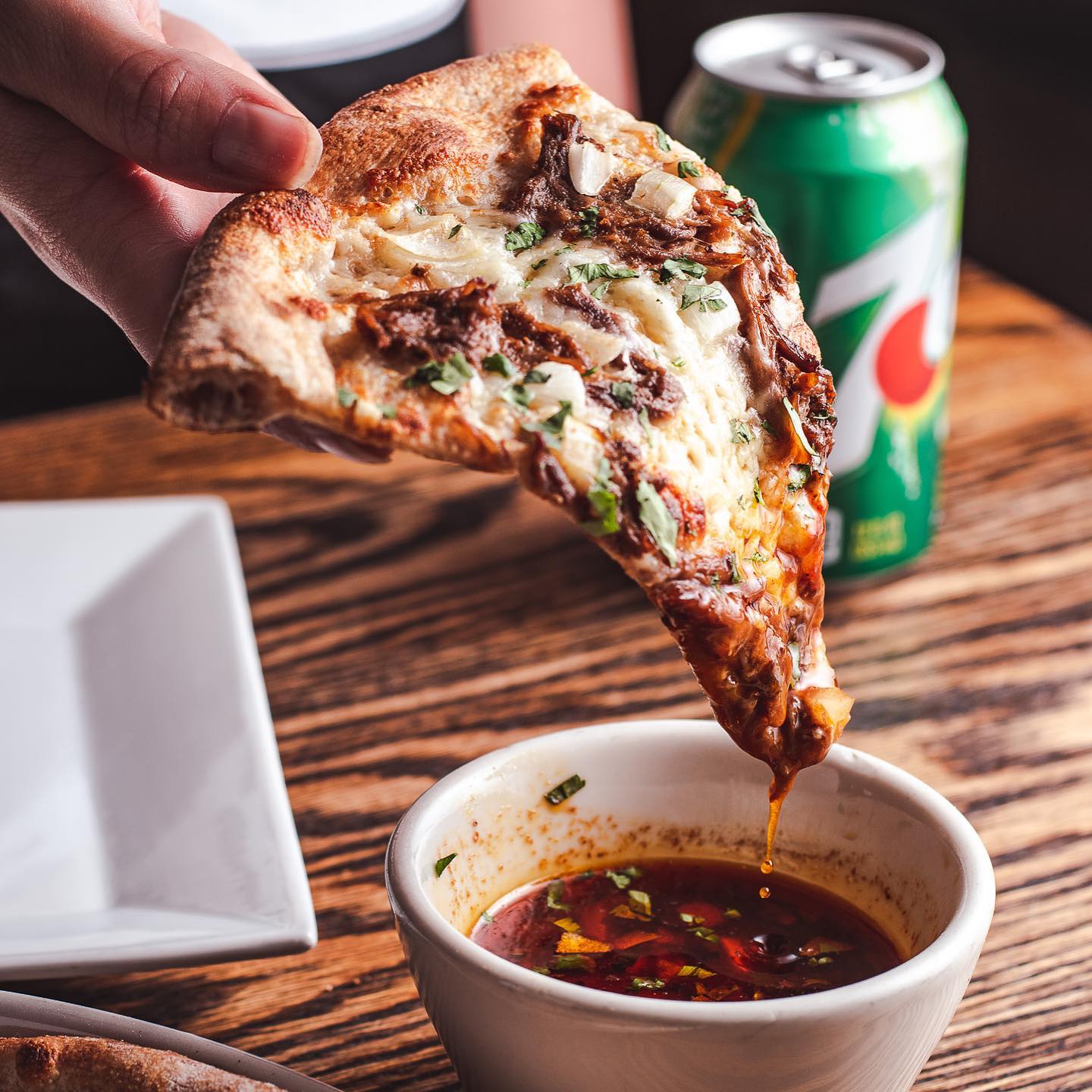
Naples isn’t the only inspiration for artful pizza in Tucson.
In 2021, Travis and William Miller, the sibling team behind Serial Grillers, debuted Transplant Detroit Style Pizza in midtown. According to Transplant’s website, Motor City pizza was born in a neighborhood bar called Buddy’s Rendezvous in 1946. Of perhaps more interest to pizza lovers is the fact that the pies are made in a square pan and feature a doughy Sicilian-style crust edged by caramelized cheese. Also notable: Transplant offers a Spicy Pickle pie. Pickle-topped pizza is happening now, and Transplant is ahead of the curve.
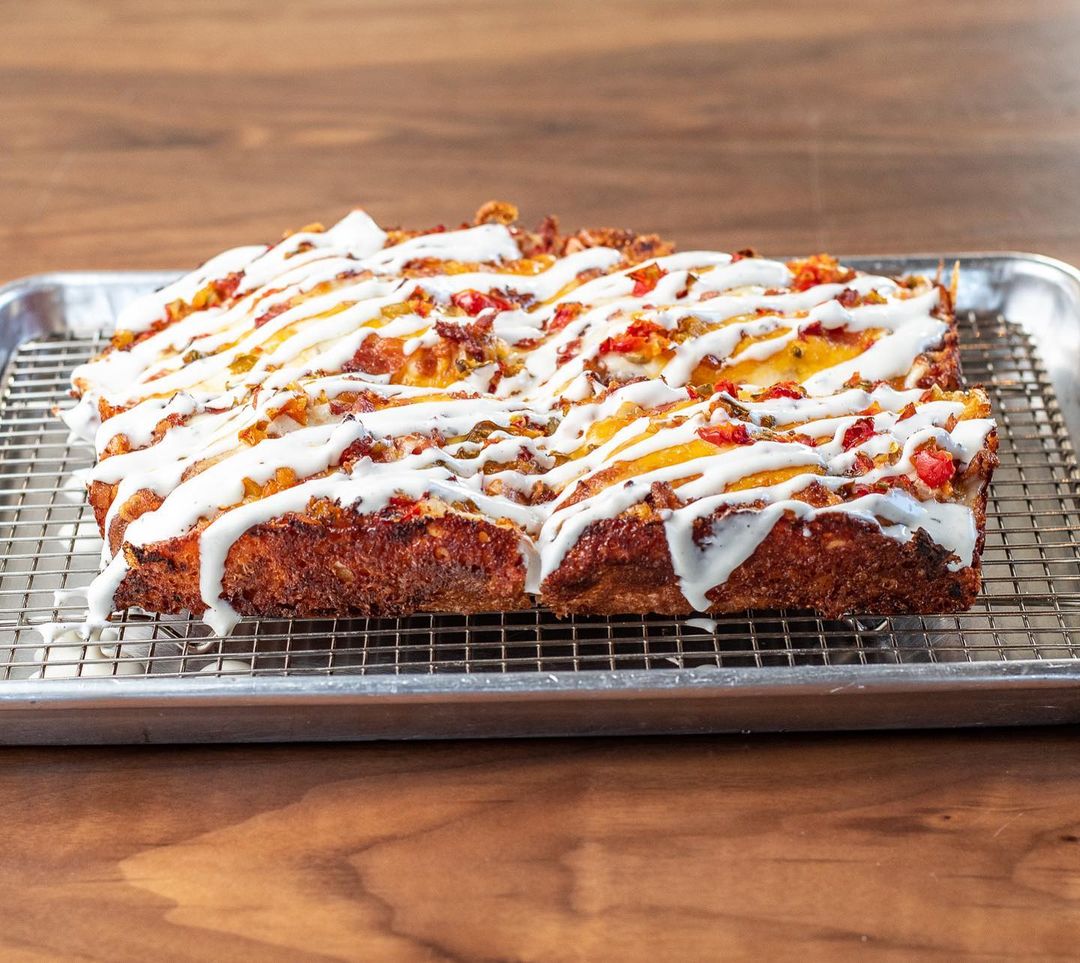
Two other recent contenders in the pizza arena look to Rome for their recipes. Locale, the 2020 venture of Deb Tenino and Nick Kreutz, creators of Contigo Latin Kitchen, sells their version of the Roman street food “a taglio” — by the square slice. The dough is airy but sturdy enough for such toppings as pear, gorgonzola, arugula, and candied pecans.
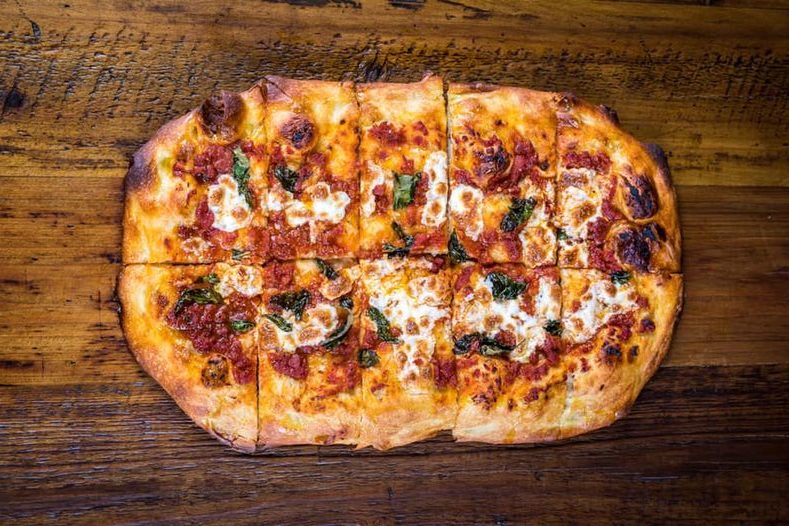
A recent James Beard award winner for his Barrio Bread, Don Guerra uses native White Sonoran wheat in the Roman-style dough used for the pizzettas served at The Monica, which opened earlier this year. Since Guerra is in partnership with the Flores family, it’s no surprise to find toppings that include El Charro’s famed carne seca, as well as a plant-based Charrovida version.
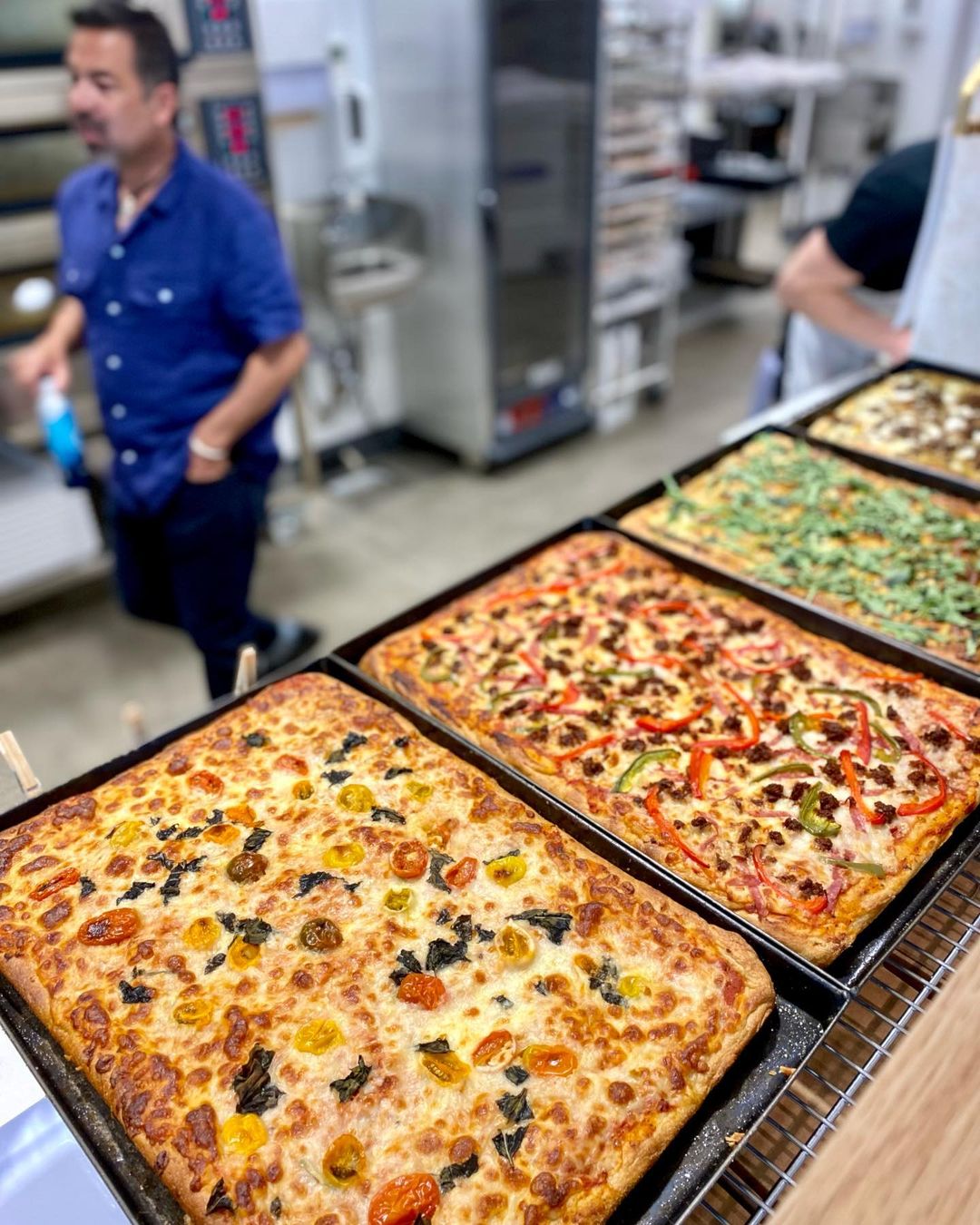
Clearly, I was spoiled for pizza choices in Tucson. But while many varieties were unquestionably delicious, none was really soul-satisfying.
Then one day, as I was driving towards my midtown home, I decided to drop into Mario’s Pizza, dating back to 1958. For years, I’d been drawn to the retro neon sign outside the modest establishment and to the promise of New York-style pies, but I’d never gone in. Maybe I was afraid I’d be disappointed.
The place looked auspicious, with Formica-topped tables and an order window looking directly at a pizza oven. I opted for the lunch special, two plain cheese slices, and a Diet Coke. My slices were brought out on a paper plate — which is as it should be. Pizza was meant to be picked up in your hand. For food that won’t spend a lot of time near the table, disposable dishes make sense.
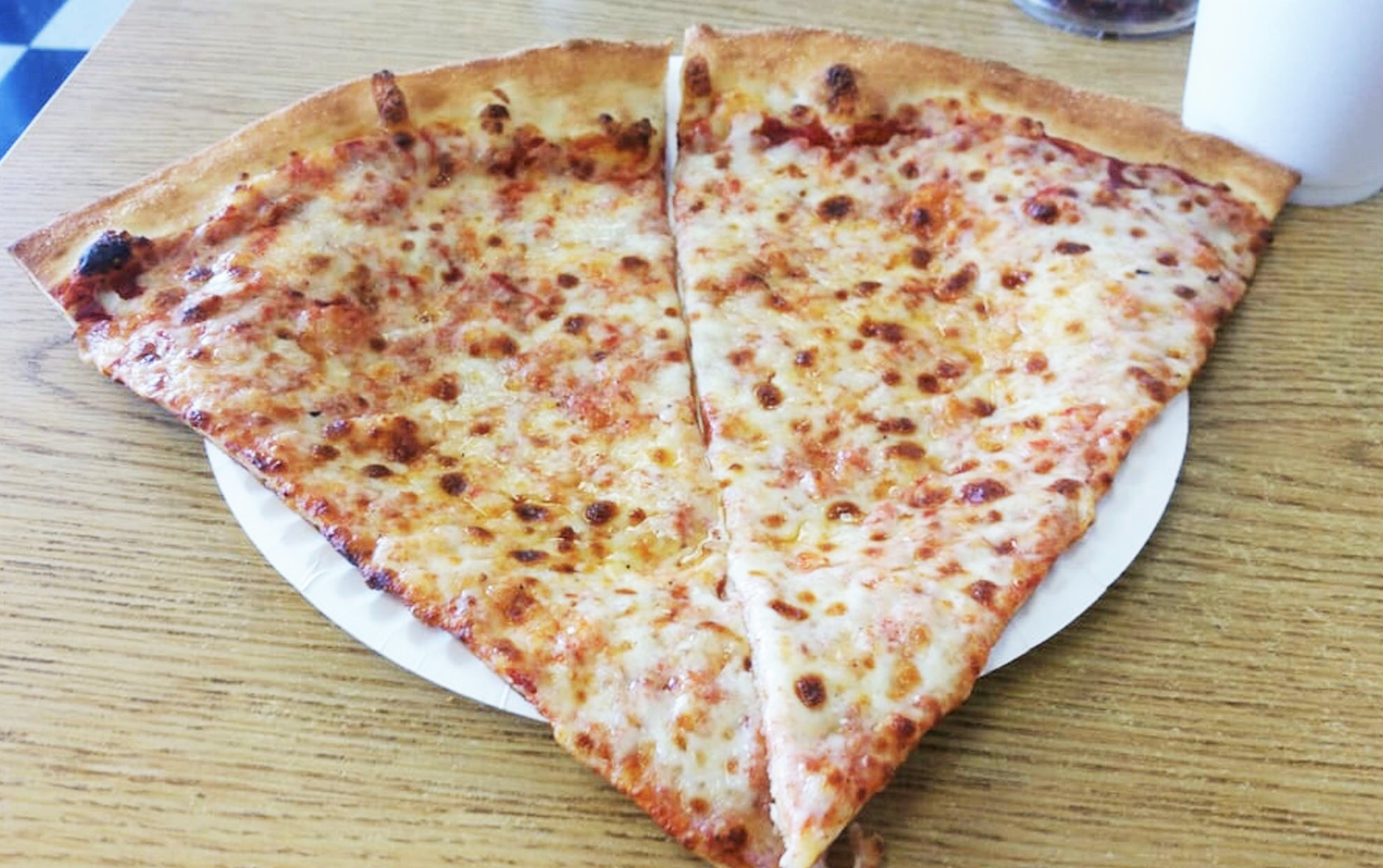
The pizza itself also looked promising, the mozzarella and red sauce meshed together in one gloriously gloppy topping that reached almost to the edge of the crust, one with only a gentle rise. With New York pizza, as opposed to Neapolitan style, it’s the cheese, not the crust, that comes out of the oven bubbly and slightly burnt. The roof of my mouth still bears the memory of pain from overeager pizza consumption, so I knew to be careful. You don’t want to wait too long, however, lest the slice cool off too much and the cheese begins to coagulate.
I took a bite. Eureka! With a red sauce that was slightly sweet, not garlicky, and in perfect ratio to the melted cheese, Mario’s pizza was the sought-after throwback to my early Brooklyn years.
Maybe you can’t go home again. But if you’re lucky, you might be able to find a very acceptable facsimile of your childhood comfort food just 1.4 miles and three minutes from your house, according to Google Maps.
Edie Jarolim has worn many hats, including a sombrero on a one-too-many-margaritas night. She earned a Ph.D. in American literature from New York University and was a guidebook editor at Fodor’s (Random House) and Frommer’s (Simon & Schuster) in New...